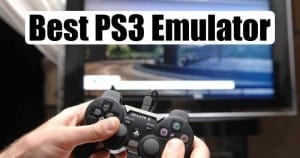



This is done elsewhere on the PS3 itself, as that’s what the hardware is designed for, the emulator doesn’t have the hardware so will compile the shaders in-game. The biggest recent development was the splitting of shader compilation, which is when the emulator has to pull in all the files to show what’s happening on the screen. If you’re expecting to play Haze in 4K ( because it’s the sh*t), but have a harsh budget, you might want to reconsider. So with advances on the development side of the emulator, the system requirements aren’t actually all that harsh if you are willing to compromise. Your mileage might vary between each game, but these recommendations for you to look into are taking into consideration that you’re either already in possession of or interested in building a PC with these parts for some emulation goodness. This doesn’t mean they’re completely bug-free, this is still in development and it’s only fairly recently that hardware has begun to catch up with the requirements that don’t break the bank. The emulator has come on leaps and bounds since 2011, running a total of 62.04% of all PS3 titles in a playable state. It’s not like loading a GameBoy Advance emulator, which nearly any PC can run and use, it’s a deeply complex piece of software that is not only utilizing your PC to generate a near 1-to-1 PS3 experience for you but is also translating the explicitly difficult Cell architecture that Sony convinced themselves was the way forward when the console was on the market. RPCS3, a PS3 Emulator for Windows and Linux, is an absolutely amazing piece of software – if you have the right parts for the job.


 0 kommentar(er)
0 kommentar(er)
